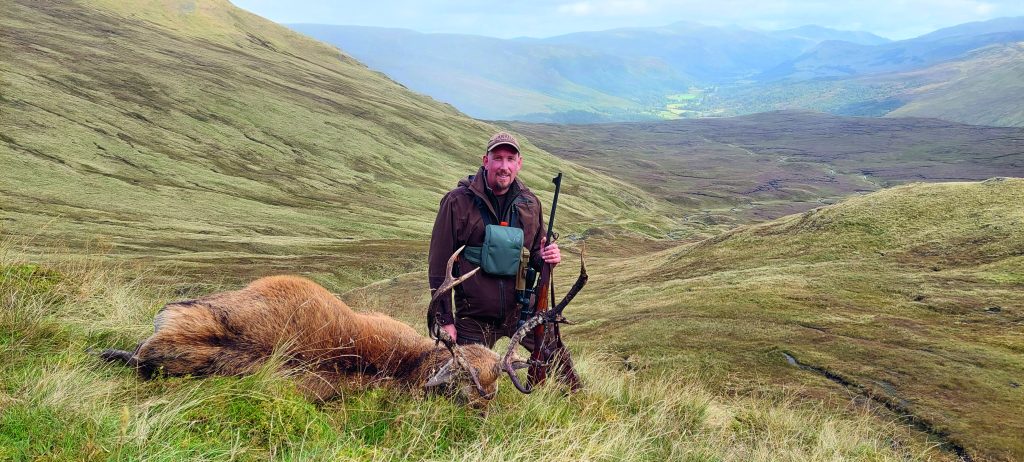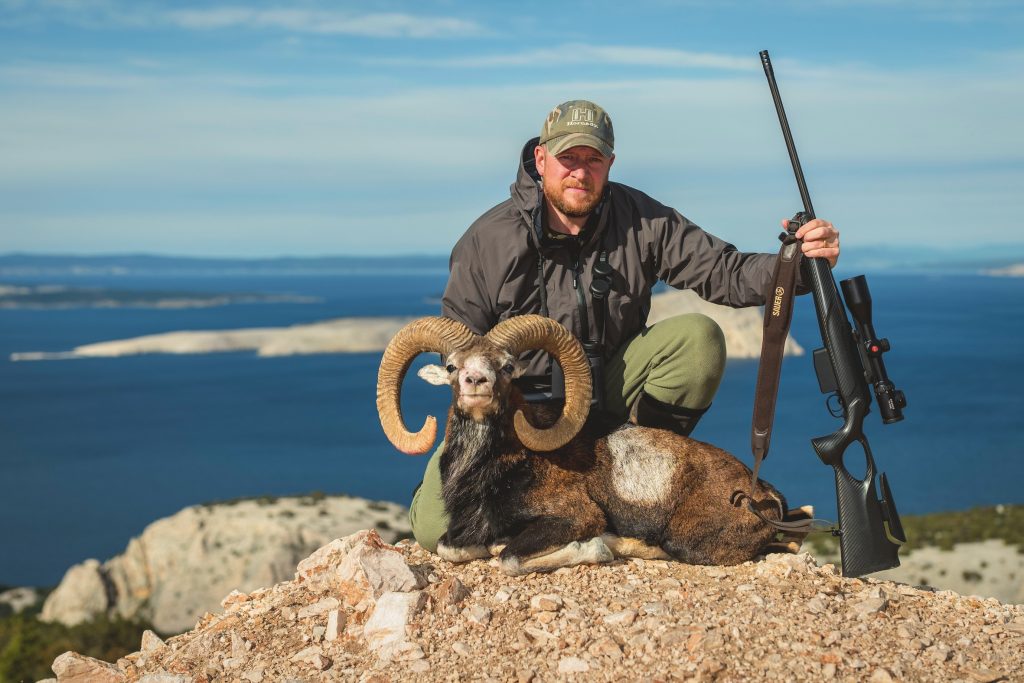Essential kit for first time foxers
Mike Powell takes us through the essential gear you will need if you plan to get into foxing, describing a perfect foxing set-up for beginners.
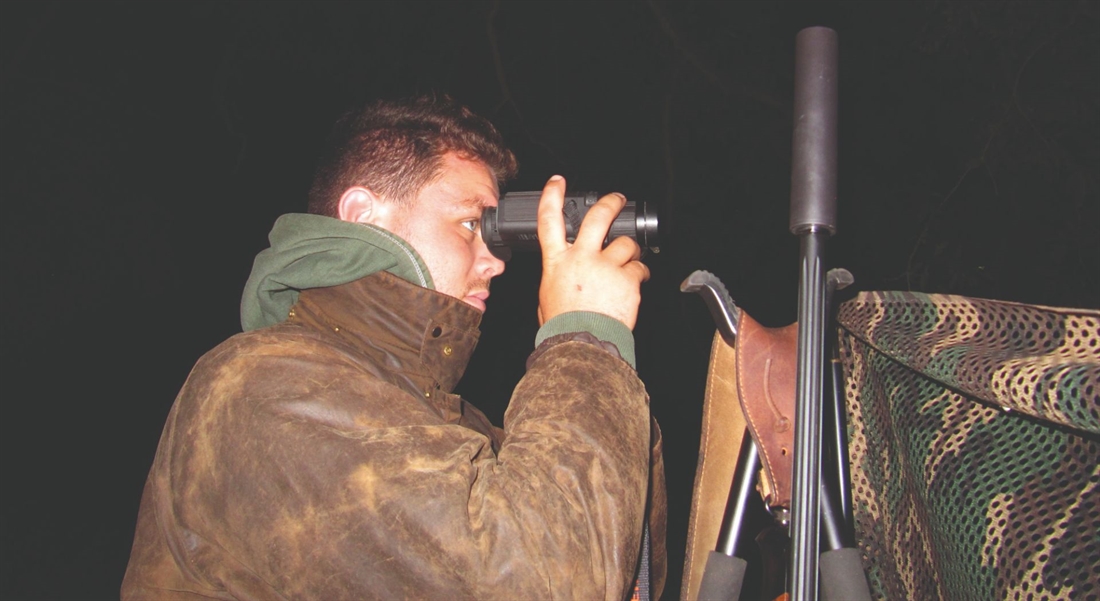
Anyone starting out on a fox shooting career will soon find that with all the gear available nowadays, coupled with the welter of advice that pours from the internet, knowing exactly what is needed and getting set up at an affordable price can be a bit of a problem! There is indeed some very expensive equipment out there, but there is no need to spend a fortune to get started.
When I shot my first fox over 70 years ago things were very simple as far as equipment was concerned. In those early post-war years there was almost nothing available in the way of rifles. My first ‘real’ rifle was a BSA Sportsman Five .22, which was what I shot my first fox with. There were quite a few shotguns available, most of them secondhand, and the majority were still hammer guns. Once the realisation dawned that very good money could be made during the winter from fox skins and cured brushes, it was the 12 bore that became the weapon of choice.
After considerable experimentation BBs became the shot size we used, as damage to the pelts was minimal. For many years, armed with various lamps and a variety of shotguns, I finally ended up with what I still reckon was the best fox gun I ever had. It was a Luigi Franchi semi-auto that was light enough to shoot one handed while holding the lamp in the other. I shot large numbers of foxes with that setup.
At the same time as my fox-control operation expanded, the demand for skins dwindled, brought about mainly by the actions of antis. This changed many things, with perhaps the biggest being that a rifle was now the tool of choice as damage to pelts was no longer a consideration. Choice was limited, but my first real fox rifle was an elderly Parker-Hale .243 that served me well for several years.
Now all has changed and gun shops are crammed with a huge selection of rifles in a wide variety of calibres. This may be exciting for the first-time buyer, but together with the sometimes confusing data available on the internet it does present a problem knowing what will suit your requirements best. This is very different from when I started out as it was really Hobson’s choice.
 Calibres and rifle brands
Calibres and rifle brands
So what is the best setup for the newcomer to fox shooting nowadays? For the sake of this article we will assume the rifle will be used for fox shooting only, as if deer are on the agenda in most cases you must have a minimum .243 calibre, which in my opinion is just outside of what I would consider a true foxing calibre, although clearly it will do the job.
Many modern rifles, from FAC-rated air weapons through the various rimfires and on to centrefires, are all capable, given perfect conditions, of killing what is in reality a fairly small animal. I say small because apart from deer, the vast majority of English shooters shoot small quarry such as rabbits and other species such as crows, rats and pigeons, and compared with these the fox appears quite large. However, take the skin off and you are left with a surprisingly small carcase.
Over the years I have shot foxes with all the above rifles, but quite obviously you cannot classify an FAC-rated air rifle or a .22 rimfire as a true foxing calibre. The first thing to look at when deciding which calibre to get is where, and under what circumstances, you are likely to be using it.
Most foxes will be shot in relatively open countryside, in which case one of the slightly larger centrefire rifles will be the best choice. However, there are quite a few situations where something smaller may fit the bill better.
As a fox controller, my work over the years has taken me to all sorts of situations – quite a few in somewhat ‘sensitive’ locations where the less noise from a rifle, the better. Around human habitation is an obvious case, trading estates and zoos are other examples. In situations like this small calibre rifles can do a really good job, as generally speaking the ranges will be quite short.
I’ve done quite a lot of fox control around farmyards, smallholdings and livery yards, and when dealing with foxes in these sorts of surroundings more often than not a .22 LR can be ideal. This is a very quiet round when the rifle is fitted with a sound moderator, and with subsonic hollow-point ammunition will deal with any fox within 50yd, which is pretty normal in and around these locations. A .17HMR will also do the job, but at the cost of substantially more noise.
Having said all of that, without a doubt most foxes will be shot in far more open country and it’s here that some confusion will arise as to the best rifle for the job. There is quite a range of calibres to choose from, and starting with the .17 calibres through to .223 there are dozen or more variations, although some are rather obscure. The most common of these smaller calibres are the .22 Hornet, the .204 Ruger, the .222 Remington and the .223 Remington.
For very many years I used a .223 almost exclusively for my foxing work. Although I no longer use this calibre, it is probably the best all-round fox calibre. I reloaded my own ammunition, usually 55gr, and it served me well. It is an accurate round capable of reaching out to the sort of ranges few of us would entertain shooting at. There is plenty of factory ammunition that is available in a variety of bullet types and weights, and should you ever stray down the reloading path it is an easy and forgiving round to load.
Eventually I moved to the .204 Ruger calibre, simply because I happened to be sent a .204 rifle for review and liked it so much I finally changed. The .204 Ruger is a very flat-shooting, high-velocity round that does the job perfectly at the sort of ranges I shoot over. It has rather less recoil than the .223, which allows the shot strike to be seen, and like the .223 is very easy to reload.
Another useful fox round is the .22 Hornet. This calibre has been around forever and although it doesn’t achieve the velocities of the previous rounds it is more than capable of taking foxes out to 150yd and even more. For anyone whose foxing activities will be at closer ranges, the venerable Hornet could well be a good choice.
Although the .17calibres will kill foxes, my experiences with them, in particular the .17 Hornet, have not been consistent enough to regard this as a foxing calibre. The highly frangible factory ammunition, with a 17gr bullet travelling at 3650ft per second, has been known to blow up on contact, which has led to the odd runner – something I’m not keen on.
So unless your fox control will all be carried out at relatively close ranges my recommendation for a foxing rifle for the newcomer would have to be the .223 Remington.
As far as the make of rifle, again there is an extremely wide choice. For the first time foxer perhaps the most common choice today would be either Tikka or CZ. That in no way reflects on any other of the currently available makes, as today there are very few bad rifles produced.
The Tikka range has become extremely popular over the past few years and they do everything required of them very well. CZ have always had a reputation for producing extremely accurate rifles, and over the past few years have improved the overall design so that today they produce some of the most practical and accurate rifles available.
The newcomer could also search the secondhand market if funds are short, as there are some excellent bargains available, although it is advisable to go where you can test the rifle on a range first.
 Scopes and accessories
Scopes and accessories
Having decided on the calibre and rifle, it is almost accepted that you will need a sound moderator. Again, there are many available. I’ve used Quicksilver moderators on most of my rifles for the past 15 years or so, but I believe they are no longer available new in this country. They are titanium with ceramic baffles and were hideously expensive, but I suspect they will see me out!
For the newcomer it’s rather a case of paying your money and taking your choice. Personally I find it almost impossible to detect much difference between any sound moderators as so much depends on the terrain over which the rifle is being fired. Any of the well-known makes should serve you well, but always remember to remove the moderator from your rifle after shooting. More bores are spoiled from pitting caused by mods being left on than from any other cause.
Now that you have a rifle in the calibre you want, the next item is the scope. Again the choice is vast and extremely confusing. As the rifle is to be used for foxing it’s almost certain that some form of night vision will be required sometime in the future if not immediately, so this needs to be borne in mind when deciding what to get.
For the newcomer there is no need to go top end, in fact some of the very best and most expensive scopes don’t really lend themselves to being used with add-on night vision units. Hawke Optics make some very good, not too expensive scopes that work very well with night vision add-ons. For my night shooting work I use Hawke scopes almost exclusively.
There are plenty of other makes out there, so have a look around and see what suits you. One thing to remember is to make sure you get a scope with side parallax adjustment. This is essential if the scope is ever to be used in conjunction with a night vision device.
 Night vision and thermal
Night vision and thermal
Talking of night vision, it’s fair to say that the difficulties of choosing any of the above equipment pale into insignificance beside deciding what night vision to get. Magazines, websites and YouTube are awash with the latest ‘must have’ kit.
When starting out you don’t need to spend a fortune. Since I started using night vision in its very earliest days it has come on in leaps and bounds, and today it’s really quite remarkable just how good some of it is. However, some of the very latest high-tech equipment is far from cheap and as a beginner there is no need to spend a fortune to shoot foxes at night.
I am fortunate as my work enables me to try out and evaluate a lot of night vision gear, and while some of it is amazingly good I don’t believe you need to go to the top to start with. I have been using the same night vision scope, a Sightmark Wraith, on my .204 for the past three years and by today’s standards it’s getting a bit old. But I don’t think the latest and most expensive gear would get me any more foxes.
Thermal imagers are amazing and I wouldn’t be without my thermal spotters. Being able to spot a fox through a thermal is almost a must and my personal choice of a night vision setup is a thermal spotter in conjunction with a decent night vision scope or add-on.
For the beginner looking for a very usable, not too expensive night vision outfit I would suggest they look at the Pard range of add-ons. I have used a Pard 007V for a while on some of my rifles and out to 150 -200yd they do the job perfectly well, and in conjunction with something like a Hawke Sidewinder or Airmax scope will do everything you want at that range.
Most night vision scopes come with built-in infrared. Some are better than others but I’ve found virtually all night vision (not thermal, of course) benefits from a specialised IR torch. I use either a Wicked Lights A51iR, a Nightspark NM1 or a PBiR. Any of these will transform most night vision.
We’ve looked at the rifle, scope, moderator and night vision, but there are a few more items that the new fox shooter could well add that will certainly be useful before finally setting out.
Other essential foxing accessories
Some type of digital caller can be handy, especially if you can’t master hand calling. I use both ICOtec and FoxPro callers and they can be very effective. A few mouth blown callers, such as the Wam or Tenterfield type, can also work well. Calling foxes can be a frustrating exercise for the experienced and newcomer alike, so stick at it, try different sounds and volumes, and you will have success.
Another essential is a decent set of sticks to shoot off. I have two, a set of Primos trigger sticks for when I’m on the move and a Wicked Lights tripod with hog saddle for static use. A small, powerful hand torch is also always needed when out a night. Finally for clothing at night I prefer a dark outfit rather than camo, as some of the camo patterns do show up in moonlight. Dressed in Loden green with a face veil and gloves you can be virtually invisible.
With the above kit anyone should be ready to go and get a few foxes. But remember that while night vision is amazing, long before it arrived we shot considerable numbers of foxes ‘on the lamp’. That still holds good, especially with some of the excellent torches now available. So if night vision is beyond your budget you can still get out at night and shoot some foxes – although some practice will be required!
Foxes are no doubt a worthy quarry and deserving of respect. Restrict yourself to shooting at ranges you are comfortable with and don’t be tempted to just ‘have a go’. They deserve better than that, even though they can be a menace at times. Good foxing!
Related Articles
Get the latest news delivered direct to your door
Subscribe to Rifle Shooter
Elevate your shooting experience with a subscription to Rifle Shooter magazine, the UK’s premier publication for dedicated rifle enthusiasts.
Whether you’re a seasoned shot or new to the sport, Rifle Shooter delivers expert insights, in-depth gear reviews and invaluable techniques to enhance your skills. Each bi-monthly issue brings you the latest in deer stalking, foxing, long-range shooting, and international hunting adventures, all crafted by leading experts from Britain and around the world.
By subscribing, you’ll not only save on the retail price but also gain exclusive access to £2 million Public Liability Insurance, covering recreational and professional use of shotguns, rifles, and airguns.
Don’t miss out on the opportunity to join a community of passionate shooters and stay at the forefront of rifle technology and technique.



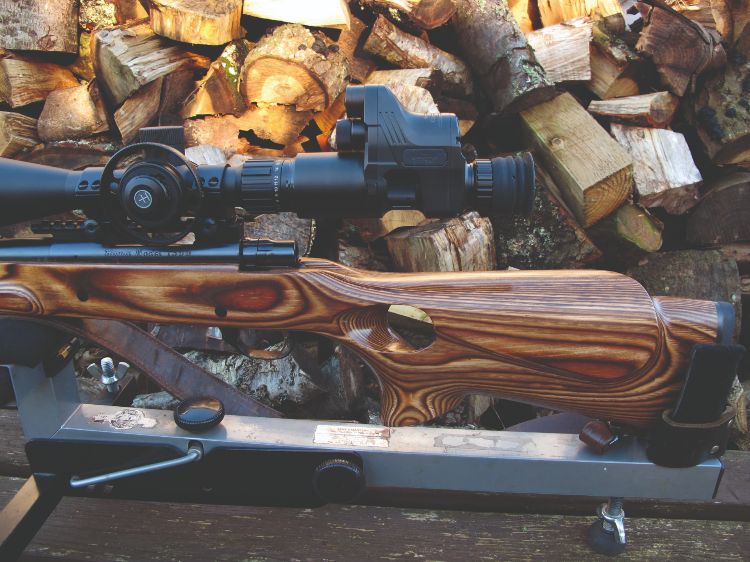 Calibres and rifle brands
Calibres and rifle brands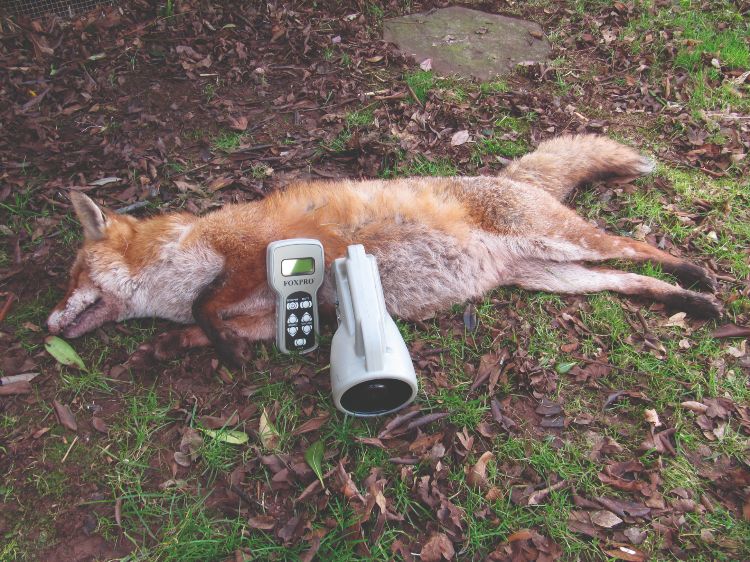 Scopes and accessories
Scopes and accessories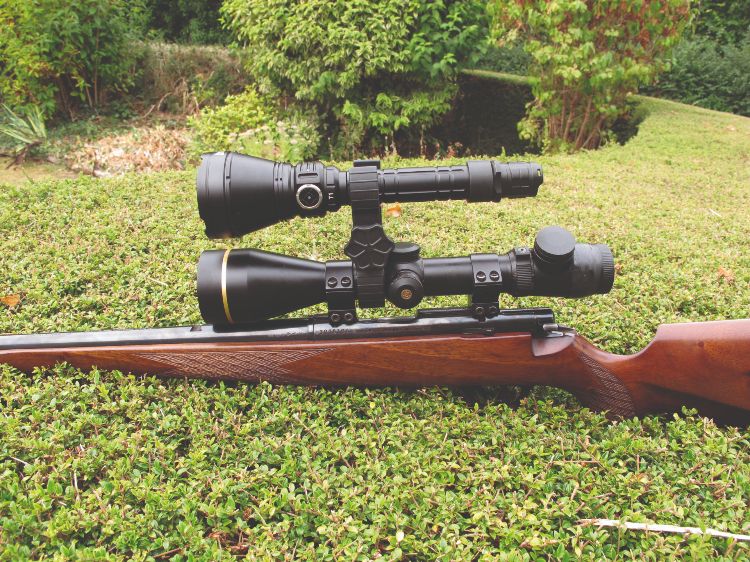 Night vision and thermal
Night vision and thermal